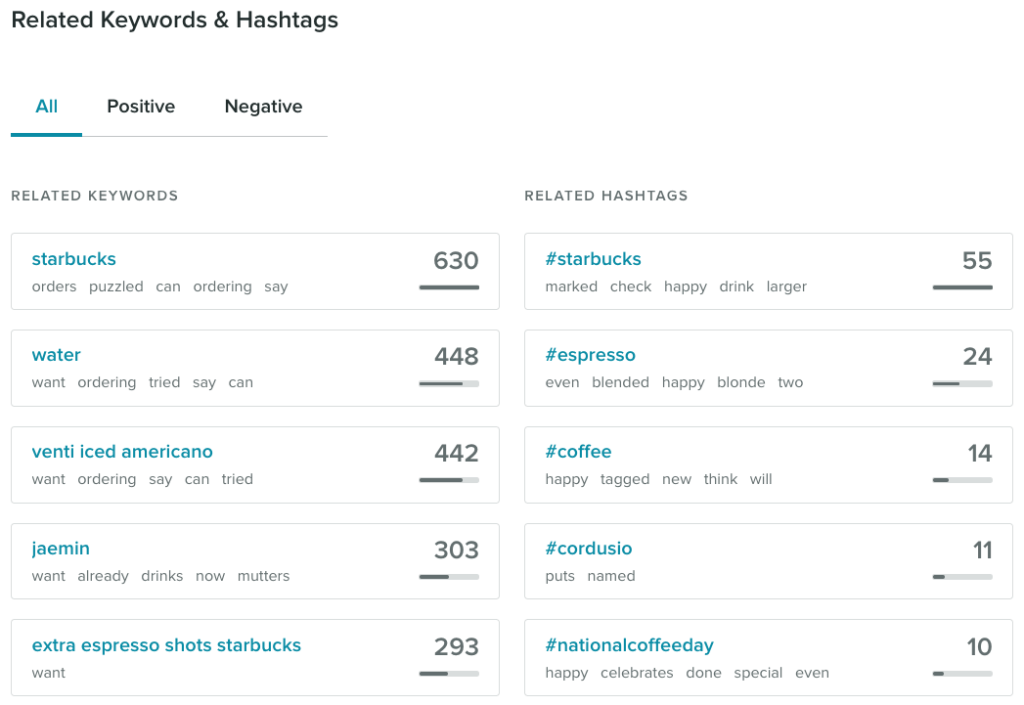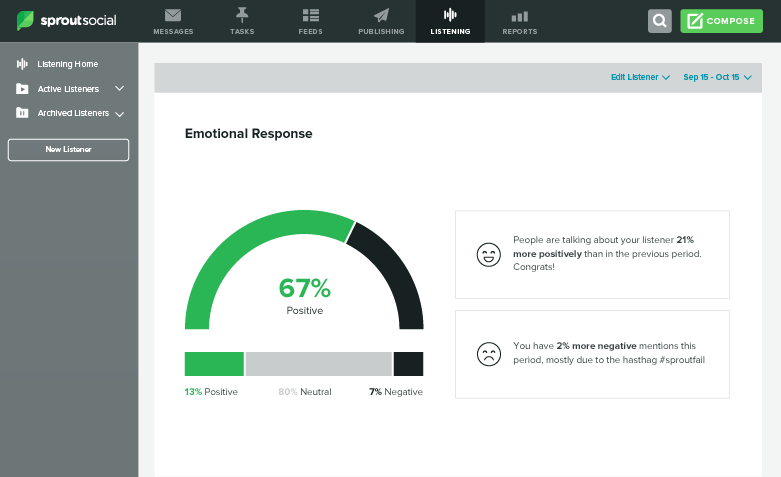
By Brooke B. Sellas, {grow} Contributing Columnist
Have you harnessed social listening?
As I peruse trends for 2019, I see a lot about listening on social. And I have to chuckle … how is this trendy or new?!
In any case, if part of your marketing strategy involves social media it should also involve social listening.
Here are four easy ways using listening on social media can inform your marketing strategy.
First, Seek To Understand
If you’ve read anything by Stephen Covey, you’re quite familiar with this statement.
“If I were to summarize in one sentence the single most important principle I have learned in the field of interpersonal relations, it would be this: Seek first to understand, then to be understood.” ~ Dr. Stephen R. Covey
This data can inform a myriad of marketing decisions, like:
- Share of voice
- Emerging trends
- Brand sentiment
- Influencers connected to your brand
Let’s take a look at each of these areas to see how social listening can inform your marketing strategy in 2019.
Social Listening & Share of Voice
Perhaps the most popular use for social listening is Share of Voice (SOV).
If you’re not familiar with SOV, it’s the measurement of the amount conversations your brand has with your target audience compared to your competitors.
On social, some marketers look at SOV as the amount of social media messages shared about your brand (in relation to all of your competitors). But you can also look at SOV around a specific keyword or hashtag.
Read over this post on social media KPIs for an example of how to use SOV.
Understanding your brand’s SOV will help you more effectively allocate resources.
So, using social listening, you may see that your social presence is well received but not ranking for search. This means you may need to spend more time on SEO and less on social.
In any case, you can increase your SOV by:
- Actively engaging in social conversations
- Responding in a timely manner to your mentions (nearly 89% of messages still go completely ignored!)
- Sharing content your audience wants to consume
- Participate in industry conversations
Emerging Trends
If you’re using social listening to measure conversations around your brand, you’ll start to see data around what your audience finds engaging.
We like to use this data to show what content works the best — and what content we need to share more/less of.
You can also use social listening to identify and qualify potential influencer partnerships — but we’ll get into that more below.
For example, we tag all of our conversations with certain tags that allow us to see when products, services, or even hashtags are being used more or less.

In some cases, we use these trends to help understand if a new customer service process is paying off.
There are endless ways you can use social listening to spot trends and patterns!
Brand Sentiment
Using brand sentiment metrics can help you:
- Keep watch for PR and social crises
- Find and assist disgruntled customers
- Respond to negative feedback
You can use a free tool like Social Mention to see how your brand sentiment is performing or you can use a more robust tool like Sprout Social (our tool of choice for listening).

Their dashboard and reporting make it extremely easy to understand where brand sentiment is heading.
Finding Influencers With Social Listening
See an influencer or micro-influencer mentioning your brand, keywords, or topics? Take note!
Social listening is very often how we find influencers partnerships for our current clients.
Whether you’re looking for Kim-K-type influencers with large followings or niche micro-influencers, listening on social makes it easy to find people creating engaging content on topics your audience cares about.
For example, if you’re trying to find an influencer on vegan specialty dishes, you can use social listening tools to look for keywords and conversations around:
- Food critics in the vegan industry
- People with popular vegan Instagram or YouTube accounts
- Vegan bloggers who write for major food sites
- TV chef personalities who are vegan
Listening To Inform Your Marketing Strategy
In conclusion, these are just a few ways you can tap into social listening to improve your marketing strategy. I promise there are many, many more.
As humans, we turn to social media to express our thoughts, opinions, frustrations and wants. And yet, we marketers are still falling all over ourselves to find the “trendiest trends of all trends for 2019.”
Instead, why don’t we turn to a tried-and-true tactic: LISTENING.
Are you already using social listening to inform your brand? I’d love to learn how in the comments below!

Brooke B. Sellas is the CEO & Founder of B Squared Media, an award-winning done-for-you social media management and advertising agency. In 2018, she was named a Top 25 Brand Builder & Woman Entrepreneur in New Jersey. She’s also a blossoming blogger and a purveyor of psychographics. Brooke’s marketing mantra is “Think Conversation, Not Campaign” so be sure to give her a shout on Twitter!
The post 4 Ways Social Listening Can Inform Your Marketing Strategy appeared first on Schaefer Marketing Solutions: We Help Businesses {grow}.
from {grow} https://feeds.feedblitz.com/~/591300144/0/markgrow~Ways-Social-Listening-Can-Inform-Your-Marketing-Strategy/
No comments:
Post a Comment